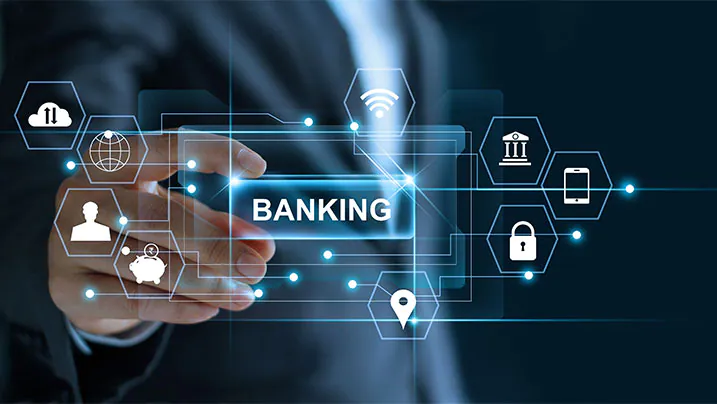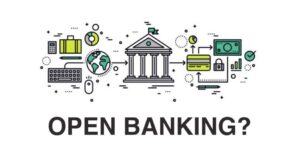As more people bank digitally, security issues are becoming increasingly important. New digital banks (neobanks) offer quick, convenient, and user-friendly services through mobile apps or websites. Digital banks offer 24/7 service, lower fees, and advanced technology, but protecting your money and data remains your responsibility. Digital banks use technology to protect people from fraud, cyberattacks, and identity theft without requiring a physical presence. Understanding the security of your digital bank can increase your confidence and decision-making.
Digital Bank Regulations
Approval by financial regulators is a hallmark of a secure digital bank. Like traditional banks, digital banks require a license to operate in their respective countries. Regulations ensure that banks adhere to consumer protection, data privacy, and financial transparency rules. Secure digital banks also participate in deposit insurance schemes, such as the Federal Deposit Insurance Corporation (FDIC) in the United States or the Financial Services Compensation Scheme (FSCS) in the United Kingdom, to protect your money in the event of bankruptcy. These safeguards offer customers peace of mind and security.
Data Security Starts with Encryption
Secure digital banks encrypt customer data and transactions. Hackers can’t access your data because encryption converts it into unreadable code during transmission or storage. Industry-standard protocols like SSL and TLS protect banking platforms. These layers of encryption work discreetly, whether you’re logging in, transferring money, or checking your balance. Intercepting important information without this encryption puts your identity and assets at risk. A secure digital bank consistently demonstrates the strength of its encryption policies.
Two-factor Authentication for Enhanced Security
Two-factor authentication (2FA) is another key element of secure digital banking. It requires two forms of identification to access your account, which enhances security. After entering your password, you’ll receive a one-time verification code on your phone or email, or you might be asked to use your fingerprint. This procedure prevents password thieves from accessing your account without further verification. Two-factor authentication significantly reduces unauthorized access and has become an indispensable security feature.
Biometric Login for Security and Convenience
Digital banking apps are increasingly using biometric technologies such as fingerprints, facial recognition, and voice recognition. Each user’s biometric data is unique and much harder to copy than a password or PIN. Biometric logins make it easier for customers to securely access their accounts and protect them from intruders. These features are often faster and more secure than standard logins. As biometric technology advances, it is becoming increasingly important for accessing and protecting financial data.
Real-time Notifications and Account Monitoring
Real-time notifications about account activity are a major advantage of digital banks. Secure digital banks immediately notify users of transactions, logins, password changes, and suspicious activity. These notifications keep customers informed and allow them to respond quickly if issues arise. If you receive a notification for a transaction you didn’t initiate, block your card or contact customer service. Continuous monitoring systems can also detect unusual behavior, such as remote logins or rapid spending patterns, which can trigger security checks or temporary account blocks.
Anti-Phishing and Fraud Tools
Digital banks are actively investing in fraud detection tools to protect users. These technologies use artificial intelligence and machine learning to identify fraud trends. To prevent card number theft, fraudulent login attempts, and money laundering, fraud detection software analyzes thousands of transactions in real time. Secure digital banks also warn consumers about phishing attacks, which use fake emails or text messages to steal login credentials. Some banking apps have built-in phishing and fraud protection features.
Easy Account Recovery and Support
If you lose access to your account or suspect fraud, quick help is crucial. Secure digital banks offer services like email, phone, live chat, and in-app video chat to help you recover your account. Freezing your account, requesting a new card, or resetting your password should be easy. Digital banks with 24/7 security and support are top-notch. Good customer service can help you resolve any issues quickly and save you a lot of worry.
Transparency in Security Practices
Reliable digital banks clearly state how they protect your data and money. Look for banks that clearly state their security policies on their websites or apps. They may use different encryption methods, authentication methods, customer data storage methods, and vulnerability testing frequencies. To inform users about new security measures and risks, many digital banks publish security blogs and privacy policies, which they update regularly. Transparency builds trust and demonstrates that the bank is proactive, not reactive, when it comes to data security.
Regular Vulnerability Patching and Security Updates
Cyberthreats are constantly evolving, so secure digital banks must adapt. This requires regular application and system updates to fix vulnerabilities and improve security. The regularity with which a bank updates its apps signifies its commitment to security. These upgrades are crucial for system security but may not be immediately visible. Regular audits, penetration tests, and third-party assessments can protect platforms from emerging threats. Continuous security updates demonstrate that digital banks prioritize user safety.
Conclusion
Digital banking is just as important as convenience. Digital banks offer modern technology and quick access to financial services but also require robust protection against cybercrime and fraud. Many factors contribute to the security of digital banks, including encryption, biometric login, fraud detection, and 24/7 customer service. When choosing a digital bank, consider its security features and how they protect your personal and financial information. A trustworthy digital bank gives you control over your money and the assurance that your assets are safe.




